View more posts and pages on the Historic Ipswich site
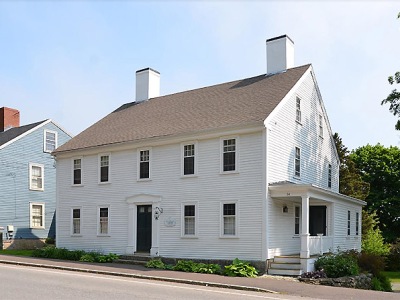
The White Horse Inn, 34 High St. (1659 / 1763)
Despite its later construction, this building is often included among the approximately 59 First Period houses in Ipswich.
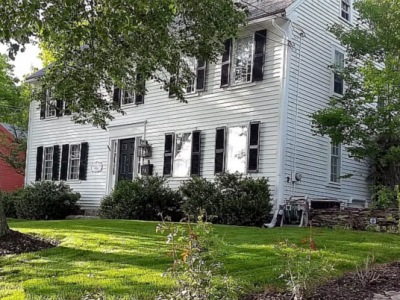
The Nathaniel Lord House, 73 High St, (1741-1847)
This house is named for a long-serving clerk in the Ipswich Probate Court. Allen Perley, the original grantee of the lot, built the first house on the site before 1650. The property went through several owners before it was purchased by Nathaniel Lord in 1741. The oldest section is the western half, and was originally…
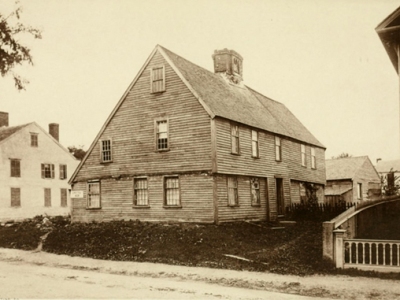
The Donton-Dodge House
William Donton (aka Donnton, Dounton), a mariner, and his wife Mary bought the lot on the corner of North Main and Summer Streets in 1695 and constructed a picturesque post-medieval-style house with overhangs and a saltbox rear addition. The house was an Ipswich landmark whose disappearance we still regret today. William Donton was born in…

The Nathaniel Hodgkins House, 48 Turkey Shore (1720)
The lot at 48 Turkey Shore Rd. was purchased in 1720 by Daniel Hodgkin, when he married Abigail Hovey. He died at sea in 1740, but the house stayed in the Hodgkins family until 1813. The house is one of three five-bay gambrel capes in Ipswich, with two windows on either side of a central…
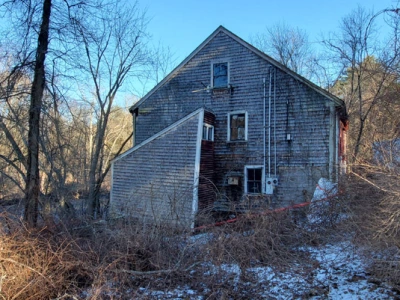
The Last Days of Norwood’s Mill
Hundreds of cars use the Ipswich River bridge that connects Mill Rd. in Ipswich to Highland St. in Hamilton without the occupants seeing the three stone arches below them, but a landmark we’re probably all familiar with is the old mill building on the Hamilton side of the bridge. A grist mill was first constructed…

The Day-Dodge House, 57 N. Main St. (1737)
This house has three entrances, and the corner section at North Main and East Street, constructed in 1737, has significant First Period elements that may be from a 1696 barn that was previously at this location. The rest of the house has Georgian and Federal features and a continuous hip roof, dating to the second…
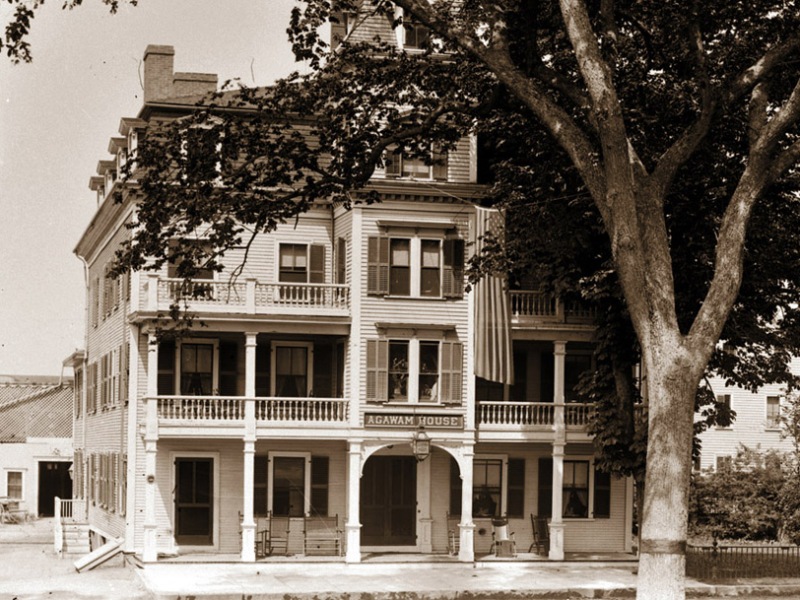
The Agawam House Hotel, 26 N. Main Street (1806)
The second Treadwell’s Inn was constructed in 1806 in the boxy Federal style and was a stop for over a dozen stagecoaches daily. The arrival of the railroad in the 1840s brought a flood of tourists, and the shallow hip roof was replaced with a Mansard roof that provided a third floor of rooms. In…
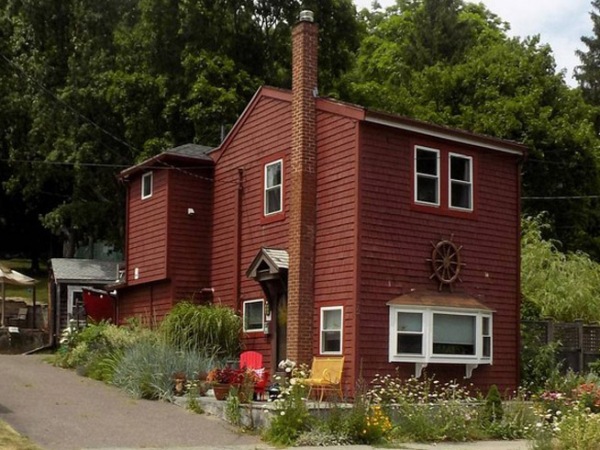
The Clam Shell, 78 East Street
Across from the Town Wharf is an odd-looking house where the Claxton family operated a take-out business in the early 20th Century. When clammers arrived at the wharf after a hard day’s work, Joseph Claxton purchased their catch for $1.50 a barrel and sold fried clams to tourists. Across the street was the busy wharf where…
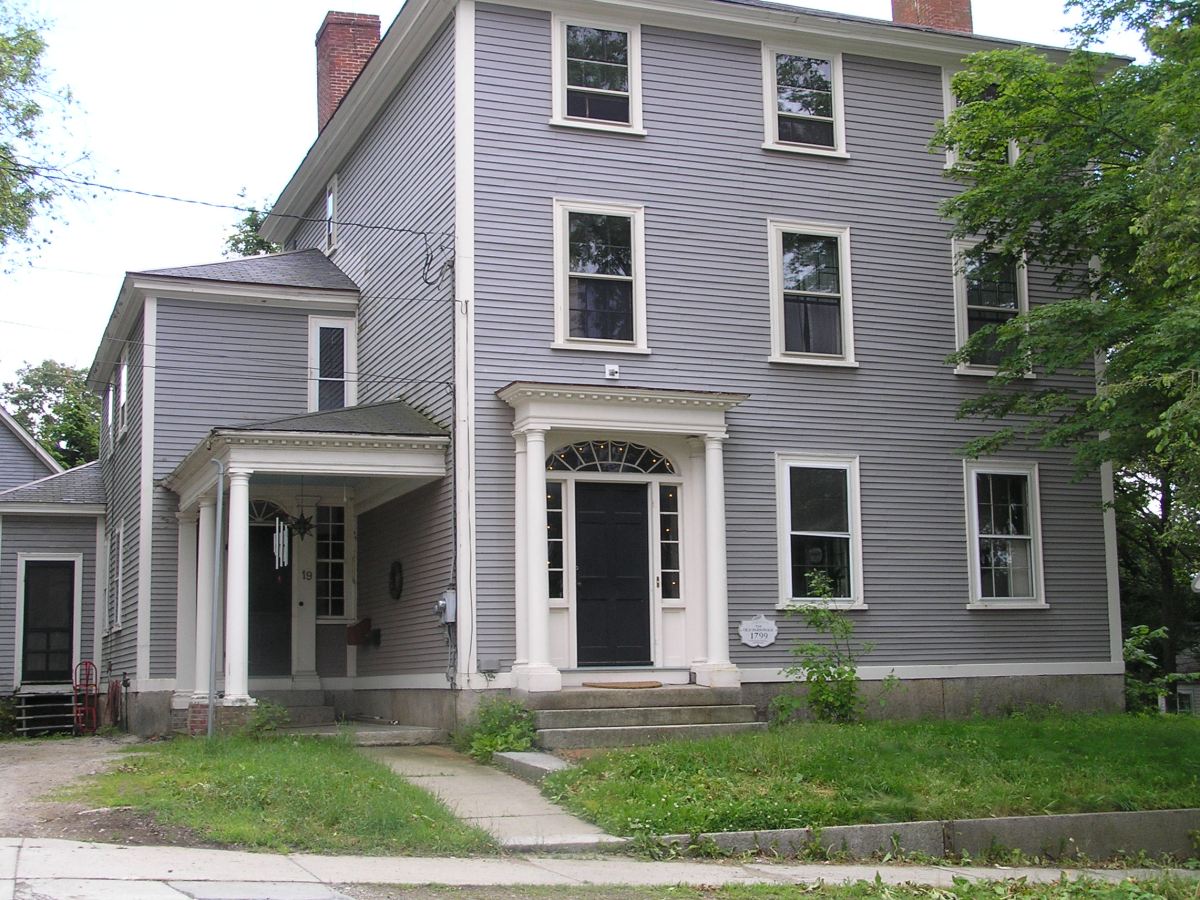
The Dr. Thomas Manning House, 19 N. Main St. (1799)
This house is legendary in Ipswich as a stop on the Underground Railroad. A trap door in a rear room opens to a hand-made ladder to the basement and a small brick chamber with a cast-iron door where the fugitive slaves probably hid. Thomas Manning was the son of legendary Dr. John Manning and the…
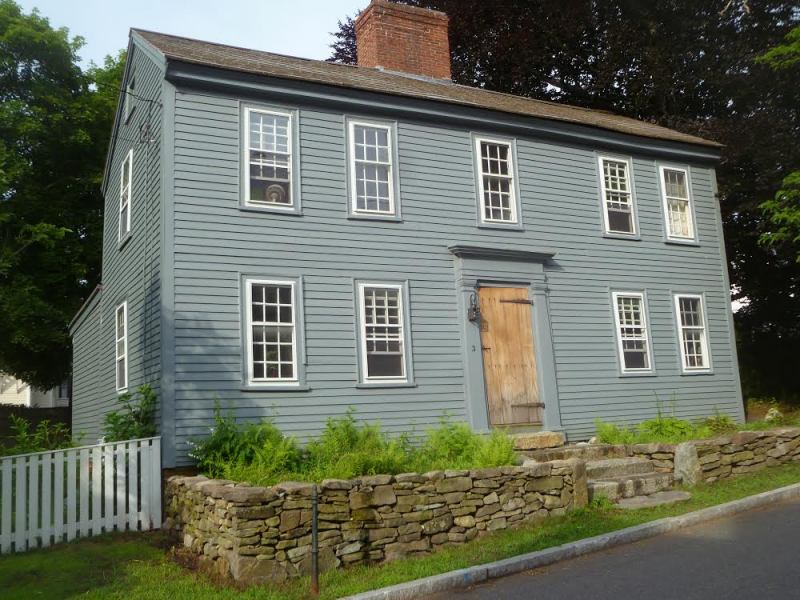
The Smith-Gould House, 3 Summer St. (c. 1730)
The so-called Benjamin Kimball House at 3 Summer Street began as a single-room structure that was doubled in width, then doubled in height, and is one of dozens of houses standing in Ipswich that were moved from their original locations. An unusual feature of this house is that it has gunstock corner posts on the…
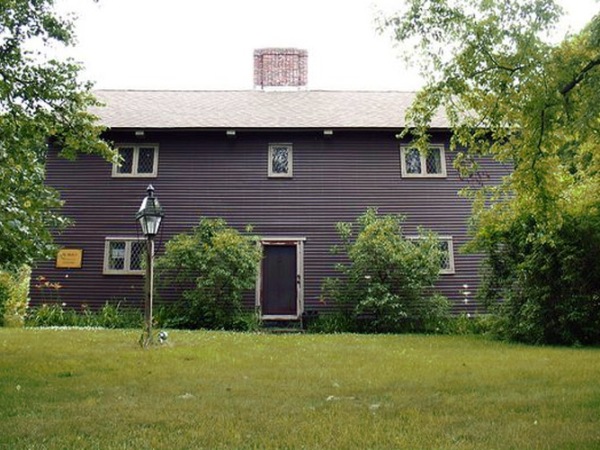
The Jonathan Lummus House, 45 High St. (1712)
Excerpts from an article written by Alice Keenan in 1982: What was to become of the old Lummus house that was in its last stages of ruinous decrepitude – would they tear it down, we wondered? Certainly, it could never be restored. Well, we wrote to our friend the other day that a small miracle…
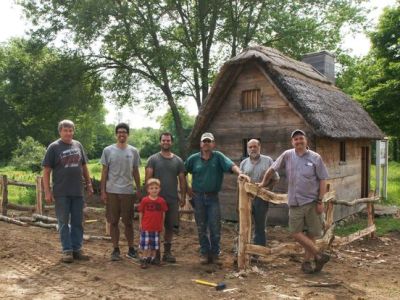
The Alexander Knight House
Alexander Knight his wife Hannah Tully arrived in Ipswich in 1635 from Chelmsford, Essex, England, and were granted a lot to build a house on High Street across from today’s Lords Square. In 1648 the house burned down; their child Nathaniel died when his clothes caught on fire. Alexander was accused of the death by…
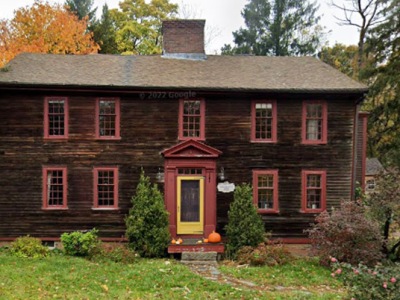
The Hodgkins-Lakeman House, 76 East St. (1668 -1718)
The first known owner of this house was William Hodgkins, but the exact date of construction is unknown. The house was sold in 1718 to Archelaus Lakeman, and it stayed in the Lakeman family for 200 years.
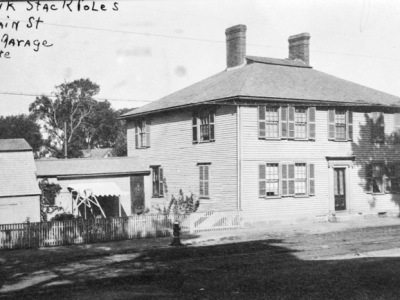
The Dr. Joseph Manning House, 31 S. Main St. (1727)
The Manning family is an Ipswich success story. Thomas Manning, a commoner, was employed in 1661 to keep the flock of sheep on the north side of the river. His grandson Joseph Manning graduated from Harvard College, and served the town as a highly-regarded physician for 50 years. Joseph’s son John Manning and grandson Thomas…
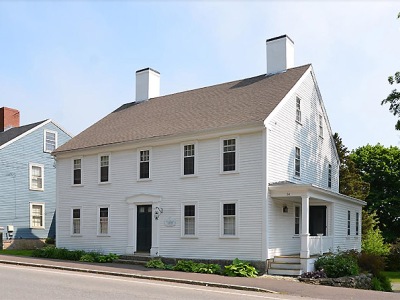
The White Horse Inn, 34 High St. (1659 / 1763)
In 1658, Corporal John Andrews was complained of in court by the most prominent men in town for keeping the doors of his inn open past nine o’clock, entertaining young men in devious ways, and selling wine upon pretense of selling by the gallon and yet drawing it by the pint. Their petition against the…
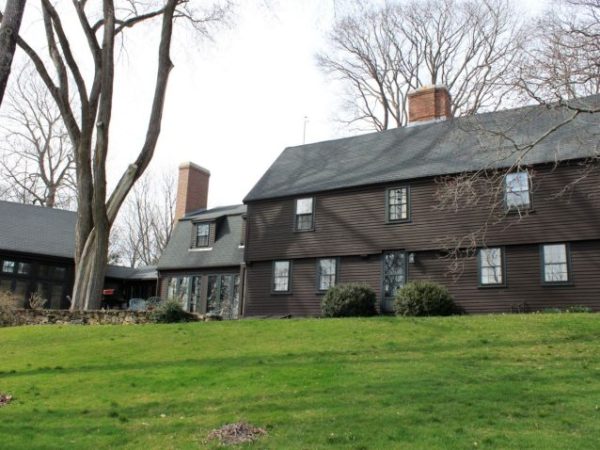
The Giddings-Burnham House, 43 Argilla Road (c. 1640-1680)
I’m frequently asked, “What’s the oldest house in Ipswich?” It’s not an easy question to answer. Dendrochronology (tree ring counting) showed that the earliest part of the Whipple House, which was thought to be the oldest house in town, dates to 1677, and the “1640 Hart House” was constructed about 1678. The Merchant-Choate House by…
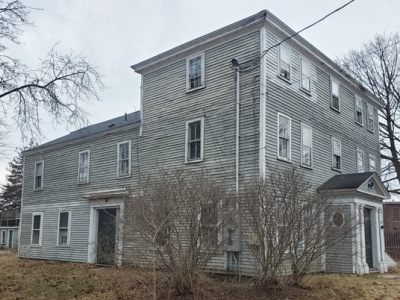
The Samuel Dutch House, 69 S. Main St. (c. 1723)
After wealthy Richard Haffield of Chebacco Parish died, his widow slowly went insane, and her daughter Rachel, who lived with her, foolishly married a younger man named Lawrence Clinton who connived to steal their inheritance. In 1655, the Town of Ipswich took mercy on the old woman and sold her “four rods of ground…near the…
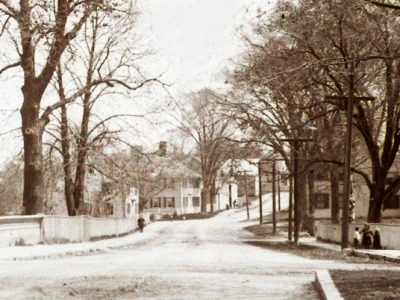
Three Old Houses at the intersection of Poplar St. and Turkey Shore
The house at 5-7 Poplar St. was the home of Dr. John Calef, the town’s representative to the General Court from 1754 to 1760. A Loyalist by nature, he was one of only 17 members who voted to retract the “Massachusetts Circular Letter,” gaining him the enmity of the town and engraver Paul Revere. When…
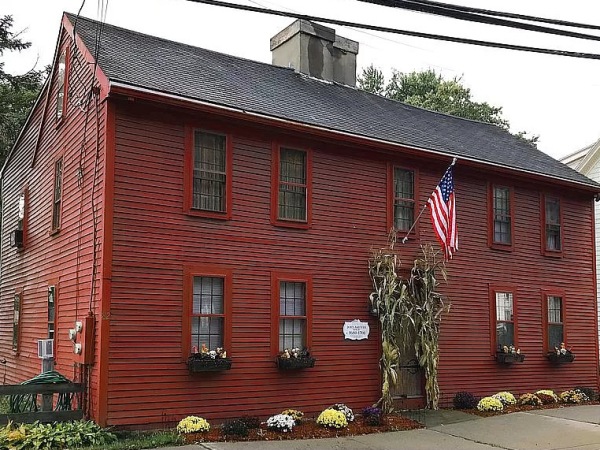
The John Brewer House, 82 High St. (c. 1680)
On the north side of the intersection of Lord’s Square, Linebrook Rd., and High St. was a large lot known as “Brewer’s Corner” in the 17th and 18th Centuries. John Brewer arrived in Ipswich with his father Thomas Brewer before 1639 as a teenager. The father eventually moved to Hampton, but John stayed and married…
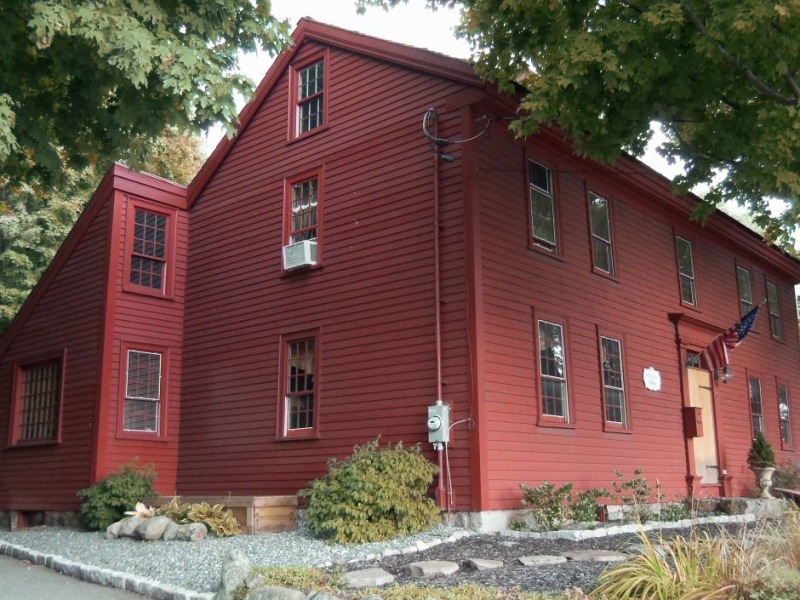
The John Kimball House, 77 High St. (1680)
Antiques dealer Ralph Burnham restored the house at 77 High Street in the 1930s to expose its First Period architectural elements, The original owner of this house was John Kimball, born in Rattlesden, Suffolkshire, England in 1621, who arrived in Ipswich with his parents Richard and Ursula Scott Kimball in 1634. His wife Mary was the daughter…
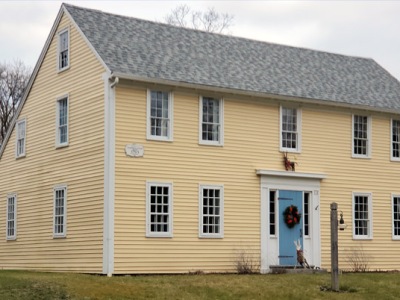
The Goodhue-Adams House, 114 Topsfield Rd. (1763)
William Goodhue, an early settler of Ipswich was granted this lot, “about half a mile above the mill.” His descendant William Goodhue married Abigail Adams in 1718, and is believed to have constructed this house in 1763. This timber frame Georgian house was constructed with an integral lean-to, the popular New England style known as…
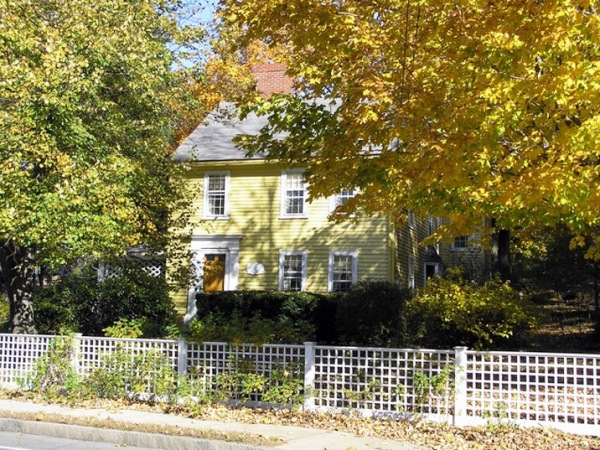
The Simon and Hannah Adams House, 95 High St. (c. 1700)
The private residence at 95 High Street is a well-preserved First Period half-house. The first owner, Simon Adams was born in 1652, the son of Ipswich settler William Adams and his wife Elizabeth Stacy. Simon was a veteran of King Philip’s War, and by occupation he was a weaver. Captain Simon Stacey in his will…
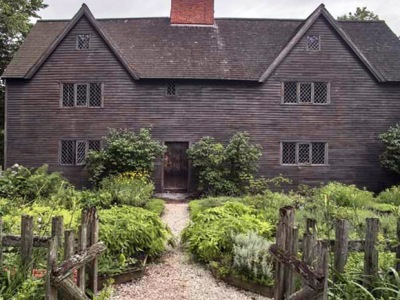
The Whipple House, Ipswich South Green (1677)
The oldest part of the house dates to 1677 when the military officer and entrepreneur Captain John Whipple constructed a town house on Saltonstall St. near the center of Ipswich
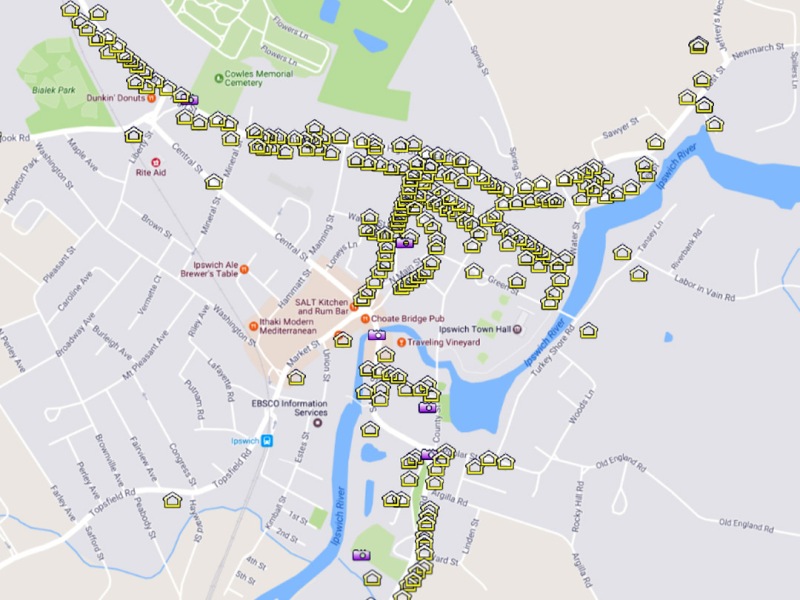
A Self-guided Tour of Historic Ipswich
This comprehensive tour of the Ipswich historic districts was created by town historian Gordon Harris in 2019. It begins at the Ipswich Riverwalk Mural and continues to the South Green, the East End, High Street, North Main Street, and Meeting House Green. View the full-screen interactive map of historic houses in Ipswich. Download “A Walking…

The John Dennis House, 10 County St. (c. 1750)
This well-preserved gambrel was constructed in the mid-18th Century by John Dennis, grandson of Thomas Dennis the joiner. The house was later owned by Captain Ignatius Dodge, and is commonly called the Dennis-Dodge house.
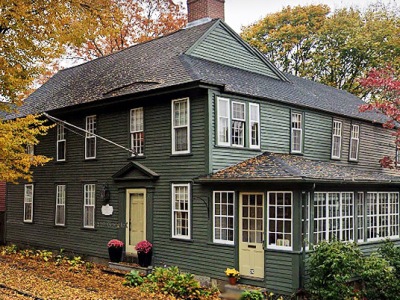
The Philip Call House, 26 High St. (1659)
This house is traditionally said to be the 2-story timber-frame home of cordwainer Philip Call constructed in 1659. Architectural historian Abbott Lowell Cummings believed that the left front rooms are a house that was constructed in the early 18th Century and was moved to the present location.
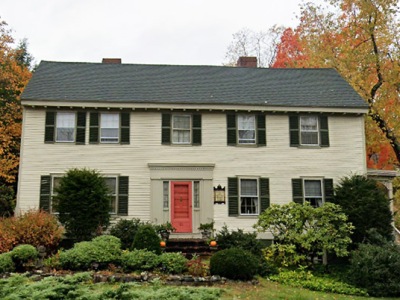
The Rogers-Brown-Rust House, 83 County Rd. (1723)
The main part of this house probably dates to 1723 under the ownership of Major Ammi Ruhami Wise. The house was moved in 1836 from the head of the South Green. Its asymetrical facade and heavy timbers lend credence to the early date of construction, and the northwest ell may be older.
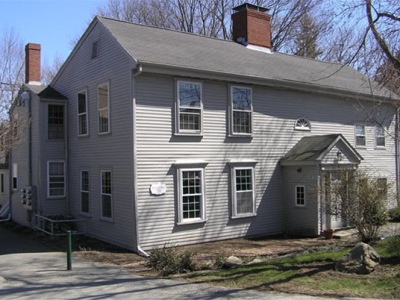
The Shoreborne Wilson House, 6 S. Main St. (c. 1692)
Shoreborne Wilson, a cooper, bought this lot in 1672 and built the northwest portion of the house between 1685 and 1692. Col. Samuel Appleton acquired the house in 1702 and built the southeast portion
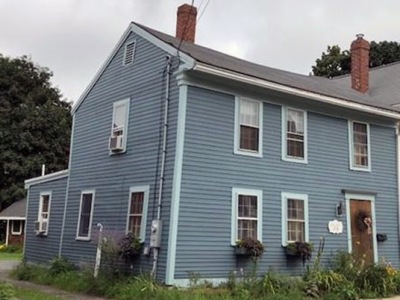
The Richard Ringe House, 5 County St. (1718)
This house was originally on Summer St. and was moved to this location in the 19th Century.
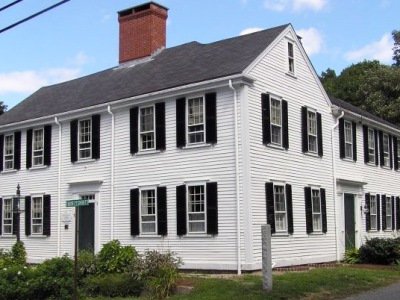
The Burnham-Patch-Day House, 1 Turkey Shore (1730)
Abner Day bought the house from the heirs of John Patch in 1814, added the large ell in the rear for an inn and tavern, which under the ownership of Capt. Samuel Day was known later as the Franklin House.
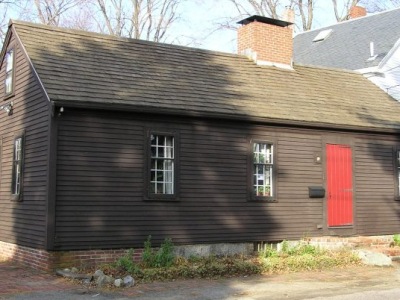
The Daniel Rindge House-John Wise saddle shop, 16 Mineral St. (c.1742 /1801)
This house is believed to have originally been a modest cape on High Street. Jabez Farley sold a 40′ lot to Joseph and John Wise, “laborers” in 1799, and they moved the Rindge house to the present location.
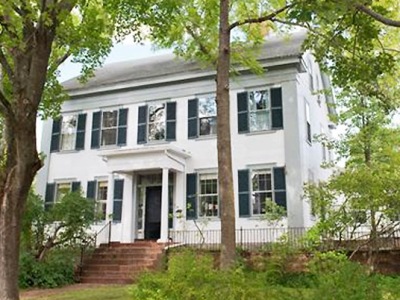
The Joseph Farley House, 2 Meeting House Green (1842)
This house is one of the best representatives of the Greek Revival period in Ipswich, with doric columns supporting the portico, the entrance opening to a central stairway with light provided by a transom window and sidelights. The wood siding is shaped to emulate stone, and massive corner boards further contribute to its Greek Revival…
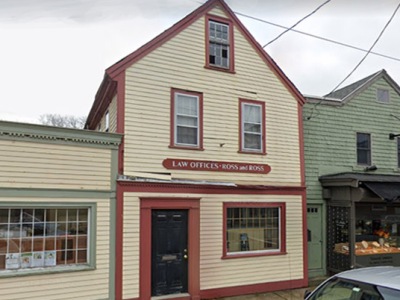
The Stacey-Ross House, 20 Market St. (1734)
In 1733, John Stacey was allowed to build a small house beside the rocky ledge at the lower end of the North Green. In 1834 the house was moved to its present location on Market St.
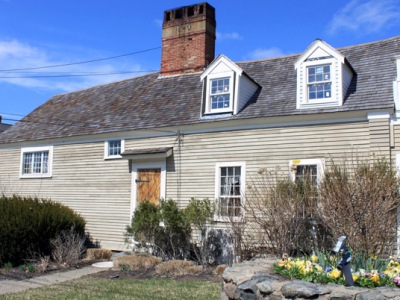
The Hart House, 51 Linebrook Rd. (1678)
The actual date of construction is 1678-80, based on examination of the oldest beams by the Oxford Tree Ring Laboratory. The house was probably constructed by Thomas Hart’s son Samuel.
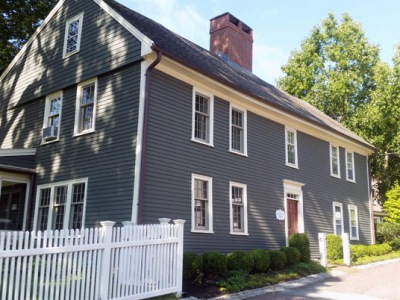
The Kendrick-Staniford House, 3 Hovey St. (1665-1707)
Construction of the oldest part of this house has been historically attributed to John Kendrick. It acquired its present form under the ownership of the Staniford family in the 18th Century.
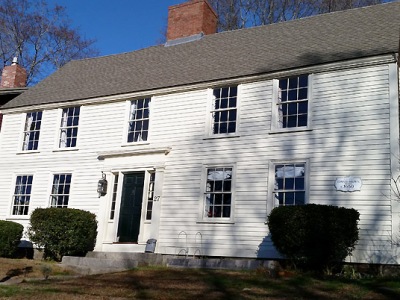
The Edward & Faith Brown House, 27 High St. (c 1650-1750)
The east side of the house at 27 High St. is a one-room over-one-room floor plan, and may have been constructed by Edward Brown, who was allocated the lot in 1639 and died in 1659.
Loading…
Something went wrong. Please refresh the page and/or try again.
